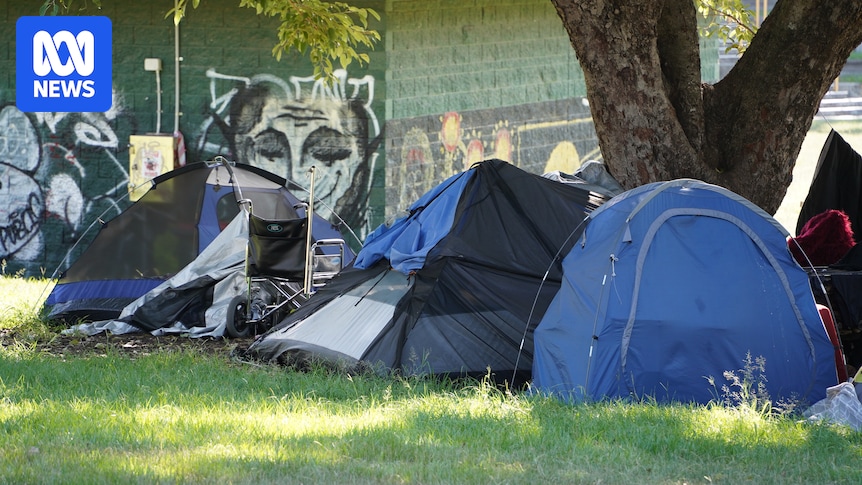Homelessness rates, particularly for women and girls, have worsened under the Albanese government’s first term due to service underfunding and a lack of affordable housing, according to the industry peak body.
The issue has reached its “worst levels in living memory”, Homelessness Australia said, with analysis of data from homelessness services across the country showing women and girls fleeing domestic violence are the most affected.
The number of people accessing homelessness services each month has increased by 10 per cent since Labor was elected in May 2022, but for women and girls, the increase has been by 14 per cent, the data shows.
Despite the government’s attempted focus on the housing crisis in its first term, Homelessness Australia’s chief executive Kate Colvin said commitments made to social housing have not hit the mark and are condemning vulnerable families to homelessness.
“Even with those commitments, the proportion of social housing is still going to continue to fall,” she said.
“We need government to do a lot more.
“This is a huge problem.”
Kate Colvin says she expects to see social housing rates continue to fall, despite the federal government’s commitments. (ABC News: Tyrone Dalton)
It comes as a new report from housing lobby group Everybody’s Home has found social housing has declined to around 4 per cent of all homes, down from 4.7 per cent in 2013, with the group’s chief executive, Maiy Azize, calling on the Albanese government to deliver more affordable rentals.
“The government mustn’t take for granted the Australians who voted them in with the hope of making housing more affordable,” she said.
Homelessness Australia’s analysis of Australian Institute of Health and Wellbeing data shows an additional 72,000 people were turned away from services in 2023-24 — and three in four were women or children.
Ms Colvin said the shortage of reasonably priced rentals meant not only were people being forced into homelessness, but women ready to move out of a domestic violence or homelessness refuge had nowhere to go.
Last week, the ABC revealed the Treasury department advised Labor soon after it was re-elected that its signature pledge to build 1.2 million homes over five years to address the housing crisis “will not be met”.
Three people share stories of homelessness
Housing and Homelessness Minister Clare O’Neil told the ABC the government has invested more than $1.2 billion in crisis and transitional housing.
“We’re acutely aware of just how complex the challenge of homelessness is, which is why we continue to listen to people with first-hand knowledge right across the homelessness sector,” she said.
“In this new term the government has appointed a special envoy for social housing and homelessness, Josh Burns, to work with the sector on a variety of complex problems affecting different communities.”
Ms Colvin said while she appreciated the government had committed funding towards building more homes, in the meantime, homelessness services were turning away more and more people.
“The homeless services haven’t had increased funding because the housing crisis has gotten worse,” she said.
“They just have more people coming.”
The ‘horrendous’ task facing homelessness services
In the inner Sydney suburb of Redfern, the 200 beds at the Women’s and Girls’ Emergency Centre are full every night.
Its chief executive, Nicole Yade, said her staff have the “horrendous” task of choosing between desperate families whenever a bed at the refuge becomes free.
“It’s an impossible choice,” she said.
“We’re always trying to help everyone, but we just don’t have the number of rooms available to be able to do that.”
Nicole Yade says it is horrendous to have to choose who receives limited places at the Redfern refuge. (Supplied)
She said frontline workers she had spoken to found it easier to transition clients into an affordable rental five years ago than they do now.
The lack of social and affordable housing meant women and their children are often taking up beds for months longer than necessary, because they cannot afford anything in the community, Ms Yade said.
“They get stuck in the refuge,” she said.
“It doesn’t feel like there’s been enough change for us on the ground when we’re delivering services to women who are escaping family and domestic violence.”
Ms Colvin said the government’s commitments to housing for this term of parliament are still “not where we’d like them to be.”
She is calling on the government to complete a national plan to end homelessness, invest more in homelessness services and grow social housing to 10 per cent of all dwellings.
The government began consultation on a national housing and homelessness plan in 2023, to determine a policy vision for the sector. The ABC understands that work is ongoing.
